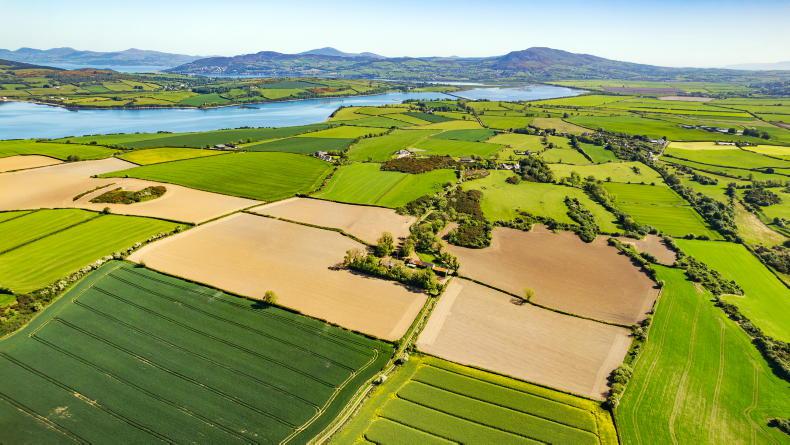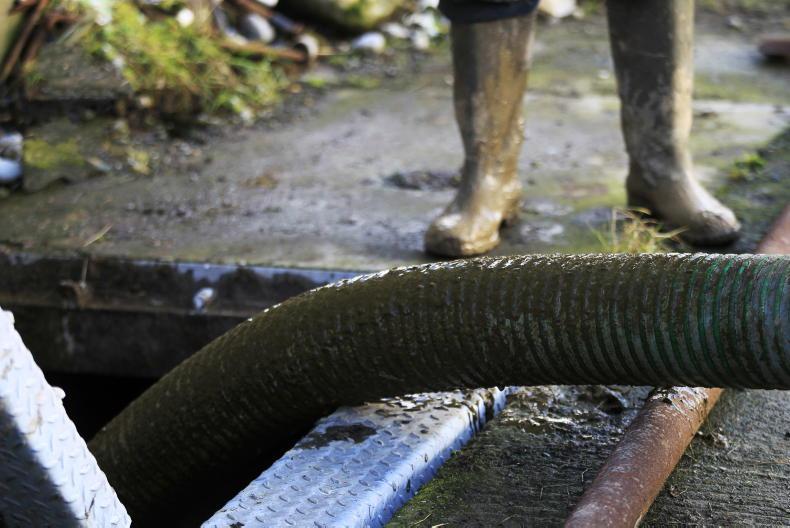As I write, we still have milking cows grazing during the day with three days of grass left until they are fully housed for the winter.
When I review our grazing year, I realise how blessed we are in NI to be able to efficiently grow such an amazing resource. In a period of poor milk prices, grazed grass has been the asset that has enabled many dairy farms to manage costs and sustain production.
From 25 April until 27 September, we were able to graze cows day and night, and although sometimes they did need to be buffer-fed round bales, these bales were made from surplus taken during a previous grazing round. Some creative back fencing was also required to manage through a very wet summer.
However, having cows at grass since late April has reduced the workload and the expense of diet-feeding cows, managing slurry, etc. I love seeing my cows at grass; there is no better sight on a beautiful day than the herd lying contentedly sleeping or chewing the cud, with the sun on their backs (I choose not to remember the many wet days).
I know grazing does not suit every farm and I am in no way judging anyone who does things differently, but personally, I would struggle to work a system where milking cows were not at grass.
TB testing
Our dogs’ favourite sight is the car of the DAERA vet arriving in the yard. This heralds to them a fun-filled day of TB testing (the fact that they recognise his car is also a sign that we are testing a lot more than I wish to be).
When he arrived last week, they were ecstatic with joy, barking in jubilation despite being confined for respite on veterinary orders after both had their front-left paws trampled by some extremely unco-operative Angus yearlings we were loading onto the cattle trailer. However, the dogs need not have worried – all that was to read were two inconclusive cows from a test in August.
I had resigned myself to the fact that one or both of these girls would ensure that we were to spend yet another winter closed, with far too much stock and workload.
After the test last Monday, both cows must have thought that I was showing them an awful lot of attention. Every time I was in feeding them, I took the opportunity to check the injection sites “just to see”.
I am extremely pleased and relieved to say that both tested negative – this result will make the coming winter much more manageable.
Reseed
I’m not an agronomist, but in my experience, ducks swimming on your reseed is rarely an indicator for successful crop establishment – inevitably, it is a roadside field!
The grass seed was direct drilled into barley stubble, straight after baling on 9 September.
Fortunately, it was not rolled, allowing for better drainage. It is, however, very questionable whether you could walk across it without losing a boot.
I have the utmost sympathy for those arable farmers who are unable to drill winter cereals in such conditions.
The wet weather has also put a lot of pressure on slurry storage. We spread our last load of slurry for the year just before the 15 October deadline, although this was only possible because we have 30 acres of free-draining, drier ground at an outfarm. But even then, some parts of the field had to be avoided.
I know extremely well that we are fortunate to be able to do this, and that all too many farmers have had exceptionally high stress levels brought on by sodden ground, full tanks and an impending slurry spreading ban.
It is ironic that the timing of all this coincided with World Mental Health Day on Tuesday 10 October.
Read more
Rain brings quick end to harvest bliss
Wet weather – it’s bad for your health
As I write, we still have milking cows grazing during the day with three days of grass left until they are fully housed for the winter.
When I review our grazing year, I realise how blessed we are in NI to be able to efficiently grow such an amazing resource. In a period of poor milk prices, grazed grass has been the asset that has enabled many dairy farms to manage costs and sustain production.
From 25 April until 27 September, we were able to graze cows day and night, and although sometimes they did need to be buffer-fed round bales, these bales were made from surplus taken during a previous grazing round. Some creative back fencing was also required to manage through a very wet summer.
However, having cows at grass since late April has reduced the workload and the expense of diet-feeding cows, managing slurry, etc. I love seeing my cows at grass; there is no better sight on a beautiful day than the herd lying contentedly sleeping or chewing the cud, with the sun on their backs (I choose not to remember the many wet days).
I know grazing does not suit every farm and I am in no way judging anyone who does things differently, but personally, I would struggle to work a system where milking cows were not at grass.
TB testing
Our dogs’ favourite sight is the car of the DAERA vet arriving in the yard. This heralds to them a fun-filled day of TB testing (the fact that they recognise his car is also a sign that we are testing a lot more than I wish to be).
When he arrived last week, they were ecstatic with joy, barking in jubilation despite being confined for respite on veterinary orders after both had their front-left paws trampled by some extremely unco-operative Angus yearlings we were loading onto the cattle trailer. However, the dogs need not have worried – all that was to read were two inconclusive cows from a test in August.
I had resigned myself to the fact that one or both of these girls would ensure that we were to spend yet another winter closed, with far too much stock and workload.
After the test last Monday, both cows must have thought that I was showing them an awful lot of attention. Every time I was in feeding them, I took the opportunity to check the injection sites “just to see”.
I am extremely pleased and relieved to say that both tested negative – this result will make the coming winter much more manageable.
Reseed
I’m not an agronomist, but in my experience, ducks swimming on your reseed is rarely an indicator for successful crop establishment – inevitably, it is a roadside field!
The grass seed was direct drilled into barley stubble, straight after baling on 9 September.
Fortunately, it was not rolled, allowing for better drainage. It is, however, very questionable whether you could walk across it without losing a boot.
I have the utmost sympathy for those arable farmers who are unable to drill winter cereals in such conditions.
The wet weather has also put a lot of pressure on slurry storage. We spread our last load of slurry for the year just before the 15 October deadline, although this was only possible because we have 30 acres of free-draining, drier ground at an outfarm. But even then, some parts of the field had to be avoided.
I know extremely well that we are fortunate to be able to do this, and that all too many farmers have had exceptionally high stress levels brought on by sodden ground, full tanks and an impending slurry spreading ban.
It is ironic that the timing of all this coincided with World Mental Health Day on Tuesday 10 October.
Read more
Rain brings quick end to harvest bliss
Wet weather – it’s bad for your health









SHARING OPTIONS